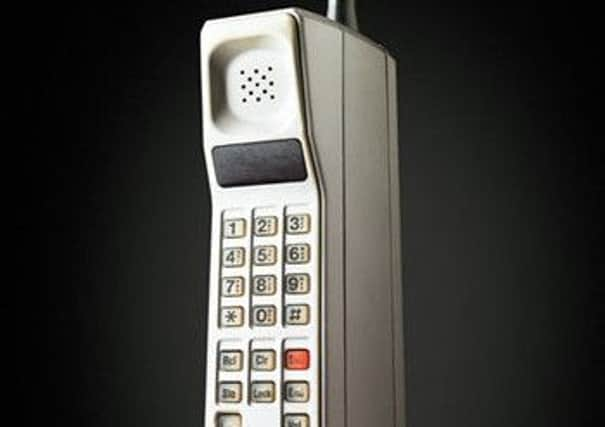What comes next for the white heat of mobile technology?


MOTOROLA got there first, when Marty Cooper, a senior engineer, called a fellow engineer at a rival company and announced with a flourish that he was using “a real ‘cellular’ phone”. Early models cost around $3,500. By 2012, there were calculated to be six billion mobile phone subscriptions used by a global population of seven billion.
Many of us got our first mobile as a safety device kept hidden away in the car, pocket or the bottom of a bag for emergencies. They have saved lives, but that “occasional use only” notion was quickly superceded by the enjoyment of the “any time” social connection. Today’s teenagers have difficulty with the idea that we used to have to use a landline to another building in order to find a person who might not be there.
Advertisement
Hide AdAdvertisement
Hide AdIt’s almost unimaginable now that we used to manage without a phone with us at all times. There are those who get visibly twitchy if they are not constantly aware of their mobile’s whereabouts.
And many would probably be shocked if it was pointed out to them that there can be a downside to always being only 11 digits away from 24-hour availabiliity.
Mobile phones had existed before 1973, but they were used solely for the exchange of scientific and military information.
Once the commercial version was on the market, they were adopted quickly by the business community then by the wider population.
Advertisement
Hide AdAdvertisement
Hide AdAs we became more closely connected, the variety of ways we could communicate converged over the decades into one device, giving phone, sound and picture recording, internet access and gaming technologies, as well as a host of other information and entertainnment applications.
Media consultant and coach Alan Stevens sees the 40th anniversary of that first mobile call as great cause for celebration. “Just this morning I have used apps to contact friends in Rome and South Africa... both virtually for free.
“There’s no doubt that the mobile phone has contributed to greater social cohesion – we can keep in touch with more people, more frequently and more cheaply.
“They represent a greater sense of community because we can find, communicate and understand each other better than ever before.
Advertisement
Hide AdAdvertisement
Hide Ad“They have affected other media, too – so, for instance, even TV news programmes now use good quality mobile phone video from places where a story breaks but the TV crews are not yet there.
“Yes, there is the problem of worldwide and unregulated use of twitter, with many people not understanding the risks they run when they say whatever comes into their heads about other people or organisations. But generally mobiles have improved the world.”
So what does the future hold for mobile phones?
Every decade has brought a new tranche of technology with new capabilities, says Des McLernon, senior lecturer in the School of Electronic and Electrical Engineering at Leeds University.
“Every generation has brought with it a new ‘killer’ application,” he says. Texting was such an application, and no-one foresaw it becoming the force it turned out to be. One of the major problems to be resolved for future generations will be the current bottleneck caused by so much data travelling around the globe. In the US, 60 per cent of mobile phone data now concerns entertainment alone. Another astounding statistic is that in 2012 just 20 households generated the same mobile data traffic as had been used by the whole world in 1995.
Advertisement
Hide AdAdvertisement
Hide Ad“Areas of current research include ‘green communications’ whereby, instead of your phone using the communications tower closest to you, then switching to another as you move around, in future towers will communicate with each other, leading to improved performance and less energy use,” says Dr McLernon.
“A lot of work is also going into looking at harvesting energy to change how you recharge your phone...So, you could be out in the middle of nowhwere but through use of energy generated in your shoes while walking, you can recharge by plugging the phone into the shoes.
“The technology is being harnessed to make intelligent clothing that will communicate wirelessly with the phone, and we already have the Google augmented reality glasses which use wi-fi and bluetooth technology so that as you are walking around you can see messages from friends on a screen, talk to friends, or connect to your tablet or computer. You can be drunk and lost, and your glasses will tell you how to get home.”